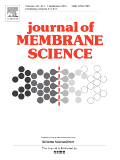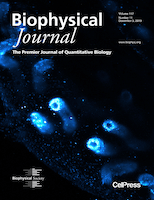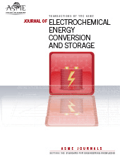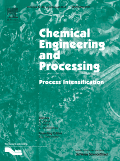
Membranes and Membrane Technologies
Scope & Guideline
Exploring the Future of Membrane Innovation
Introduction
Aims and Scopes
- Development of Membrane Materials:
The journal publishes research on the synthesis and characterization of novel membrane materials, including polymers, ceramics, and composites, aimed at improving membrane performance in various applications. - Membrane Characterization and Performance:
A significant focus is placed on investigating the transport properties and structural characteristics of membranes, including gas, liquid, and ion transport, to better understand and enhance their efficiency. - Applications of Membrane Technologies:
The journal highlights practical applications of membranes in energy production, water treatment, food processing, and biomedical fields, showcasing innovative uses and developments in membrane technology. - Modeling and Simulation:
Research involving theoretical modeling and simulation of transport phenomena in membranes is emphasized, providing insights into membrane behavior and guiding experimental designs. - Environmental and Energy Solutions:
The journal aims to contribute to sustainability by focusing on membrane technologies that address environmental challenges, such as wastewater treatment and energy recovery.
Trending and Emerging
- Surface Modification Techniques:
There is a growing interest in surface modification strategies for enhancing membrane performance, including treatments that improve selectivity, antifouling properties, and overall efficiency. - Hybrid and Composite Membranes:
Research on hybrid and composite membranes is on the rise, focusing on combining different materials to achieve superior separation properties and functionality. - Membranes for Renewable Energy Applications:
The application of membranes in renewable energy technologies, such as fuel cells, electrolyzers, and hydrogen production, is increasingly prominent, highlighting their potential in sustainable energy solutions. - Nanostructured Membranes:
The development of nanostructured membranes is emerging as a key focus area, exploring the advantages of nanoscale engineering in enhancing transport properties and selectivity. - Biomimetic Membranes:
There is a notable increase in research on biomimetic membranes that mimic natural processes, offering innovative approaches to separation and filtration technologies.
Declining or Waning
- Traditional Membrane Separation Techniques:
Research on conventional membrane separation methods, such as microfiltration and ultrafiltration, appears to be waning as newer, more innovative techniques gain traction. - Focus on Purely Theoretical Studies:
There has been a noticeable decrease in the publication of purely theoretical studies without experimental validation, as the journal increasingly favors research that combines modeling with practical applications. - Limited Attention to Historical Membrane Technologies:
Research focusing on older membrane technologies and their historical significance seems to be less frequent, with the journal shifting towards cutting-edge advancements and novel materials.
Similar Journals

JOURNAL OF MEMBRANE SCIENCE
Connecting Researchers with Cutting-edge DiscoveriesJOURNAL OF MEMBRANE SCIENCE, published by Elsevier, is a premier academic journal dedicated to advancing the field of membrane technology and its applications in various scientific domains. With its ISSN 0376-7388 and E-ISSN 1873-3123, this journal is recognized for its significant contributions to the study of filtration, separation processes, and materials science. As of 2023, it boasts an outstanding impact factor, ranking in the Q1 quartile across several categories including Biochemistry, Filtration and Separation, and Physical and Theoretical Chemistry, making it a leading resource in these fields. Researchers benefit from its rigorous peer-review process and the inclusion of breakthrough research, critical reviews, and cutting-edge developments. With converged years spanning from 1976 to 2025, the JOURNAL OF MEMBRANE SCIENCE stands out as an essential platform for professionals, students, and academics eager to explore innovative solutions and findings in membrane science. Although it operates under a traditional access model, its wealth of knowledge and global reach ensure that it remains an indispensable asset for anyone engaged in this dynamic area of study.

BIOPHYSICAL JOURNAL
Unveiling the complexities of biological phenomena.BIOPHYSICAL JOURNAL, published by CELL PRESS, is a leading interdisciplinary platform dedicated to advancing the field of biophysics. With an ISSN of 0006-3495 and an E-ISSN of 1542-0086, this esteemed journal has garnered a prestigious position within the academic community, reflected in its ranking as Q1 in Biophysics for the year 2023. Its Scopus rank of #44/152 in the category of Biochemistry, Genetics, and Molecular Biology showcases its significant influence, with a notable percentile of 71st. Since its inception in 1960, the journal has published cutting-edge research that explores the quantitative and qualitative aspects of biological phenomena, making it essential for researchers, professionals, and students in the field. While the journal operates under a subscription model, its rigorous peer-review process ensures the highest quality of published work, contributing to groundbreaking discoveries and innovations that shape the future of biophysics. For more information or to explore the latest research, please visit the journal’s platform.

Bioelectricity
Harnessing Bioelectric Phenomena for Health AdvancementsBioelectricity, published by MARY ANN LIEBERT, INC, is an esteemed journal dedicated to the interdisciplinary field that bridges biomedical engineering and electrical engineering, promoting research and innovation in the use of electrical signals for biological applications. Since its inception in 2019, the journal has established a solid reputation within the academic community, evidenced by its categorization in the Q3 quartile for Biomedical Engineering, Electrical and Electronic Engineering, and Medicine, alongside a notable Q2 ranking in Transplantation for 2023. With an ISSN of 2576-3105, Bioelectricity serves as a pivotal platform for disseminating cutting-edge research and fostering advancements in technology and medicine, drawing contributions from scholars globally. Although the journal operates under a traditional access model, it remains a critical resource for researchers, professionals, and students keen on exploring the potential of bioelectric phenomena in medical treatments and devices. As the field continues to evolve, Bioelectricity plays a vital role in shaping discussions and insights that propel innovations in health and engineering.

JOURNAL OF BIOENERGETICS AND BIOMEMBRANES
Advancing Understanding in Bioenergetics and Membrane ScienceJOURNAL OF BIOENERGETICS AND BIOMEMBRANES, published by SPRINGER/PLENUM PUBLISHERS, is a leading journal dedicated to the study of bioenergetics and biomembranes, covering essential topics such as cellular energy transformation and membrane dynamics. Since its inception in 1976, the journal has developed a robust reputation within the scientific community, currently holding a Q3 ranking in Cell Biology and a Q2 ranking in Physiology for 2023. Boasting a prestigious Scopus Rank in both Biochemistry and Physiology, it serves as a crucial platform for disseminating pioneering research findings. With its commitment to quality and innovation, the journal plays a significant role in advancing our understanding of the fundamental processes that underlie life at the cellular level. Although it does not offer open access options, the journal remains accessible through universities and research institutions, ensuring that vital research is widely shared among scholars, professionals, and students alike. The JOURNAL OF BIOENERGETICS AND BIOMEMBRANES is essential for anyone seeking to contribute to or stay informed about developments in this dynamic field.

Membranes
Empowering knowledge exchange in membrane science.Membranes, published by MDPI since 2011, is an esteemed open access journal dedicated to advancing the field of membrane science and technology. With an E-ISSN of 2077-0375, this journal serves as a vital platform for researchers and professionals from various disciplines such as chemical engineering, filtration, and separation technologies. Holding a commendable Q2 ranking in Chemical Engineering (miscellaneous) and notable placement in filtration and process chemistry categories, it provides a robust framework for researchers to disseminate groundbreaking findings. The journal's commitment to open access ensures a wide-reaching impact, allowing for unrestricted sharing of high-quality research that addresses the critical challenges and innovations in membrane technology. Situated in Switzerland, Membranes is not only a cornerstone for academic inquiry but also a leading resource for students and industry experts seeking cutting-edge developments in their fields.

Journal of Electrochemical Energy Conversion and Storage
Pioneering Research in Sustainable Energy TechnologiesThe Journal of Electrochemical Energy Conversion and Storage, published by ASME, is a premier platform for cutting-edge research in the fields of electrochemistry, energy engineering, and materials science. With an ISSN of 2381-6872 and an E-ISSN of 2381-6910, this journal aims to disseminate high-quality articles that contribute to the understanding and application of energy conversion and storage technologies. Notably recognized in the 2023 Category Quartiles as Q2 in multiple categories including Electronic, Optical and Magnetic Materials, Energy Engineering and Power Technology, and Mechanical Engineering, it reflects a strong academic impact within its field. The journal also boasts competitive Scopus rankings, highlighting its relevance and influence across disciplines. Operating under an open access model, the journal ensures that research findings are widely accessible, fostering collaboration and innovation among researchers, professionals, and students globally. As we move toward a more sustainable future, the Journal of Electrochemical Energy Conversion and Storage plays a critical role in advancing technologies that promise to reshape how we harness and utilize energy.

JOURNAL OF MEMBRANE BIOLOGY
Decoding Membrane Mechanisms for Tomorrow's ScienceWelcome to the Journal of Membrane Biology, a premier publication dedicated to advancing our understanding of the complex roles membranes play in biological systems. Published by Springer, this journal features research articles, reviews, and communications on a broad range of topics related to membrane biology, including biomolecular interactions, transport mechanisms, and physiological responses. With an ISSN of 0022-2631 and E-ISSN 1432-1424, the journal has been a cornerstone in the field since its inception in 1969 and continues to thrive as it looks towards 2024. Ranked in the second quartile (Q2) for Biophysics and Physiology, and third quartile (Q3) in Cell Biology, it showcases impactful research that embodies the spirit of scientific inquiry and innovation. Although currently not an Open Access journal, it remains easily accessible to researchers, professionals, and students eager to delve into the dynamic world of membrane studies. As the understanding of membrane dynamics expands, so does its relevance in areas such as drug development and cellular engineering, making the Journal of Membrane Biology an essential resource for those at the forefront of these critical scientific advancements.

Chemical Engineering and Processing-Process Intensification
Innovating Chemical Engineering for a Sustainable FutureChemical Engineering and Processing - Process Intensification is a leading journal published by Elsevier Science SA, specializing in the multifaceted domain of chemical engineering. With the ISSN 0255-2701 and E-ISSN 1873-3204, this journal stands as a beacon of knowledge, facilitating the dissemination of innovative research from 1984 onwards and continuing through 2024. Renowned for its rigorous peer-review process, it boasts a distinguished reputation, reflected in its top-tier rankings within several fields: Q1 in Chemical Engineering (Miscellaneous), Q2 in Chemistry, and Q1 in Industrial and Manufacturing Engineering. This journal focuses on the advancements in process intensification, which are crucial for optimizing efficiency and sustainability in chemical processes. Although access is not open, the journal serves as an essential resource for researchers, professionals, and students alike who seek to advance their understanding and contribute to the evolving landscape of chemical engineering and process technology. Join a community of innovators driving the future of process engineering through impactful and cutting-edge research.

Journal of Membrane Science Letters
Pioneering Research in Membrane ApplicationsJournal of Membrane Science Letters, published by ELSEVIER, is a premier open-access journal dedicated to advancing knowledge in the fields of membrane science and technology. With an ISSN of 2772-4212, the journal aims to disseminate high-quality research papers, reviews, and short communications that focus on innovative materials, processes, and applications associated with membrane systems. Since its launch in 2021, the journal has quickly established itself as a credible source of information within the scientific community, reflected in its robust quartile rankings: Q2 in Biochemistry and Filtration and Separation, and Q1 in both Materials Science (miscellaneous) and Physical and Theoretical Chemistry. The journal is committed to fostering collaborative research and interdisciplinary studies while providing an accessible platform for researchers and professionals. Its impact factor and growing citation index underscore the journal’s significance in shaping the future of membrane technology and its applications. Located in Amsterdam, Netherlands, the Journal of Membrane Science Letters is a vital resource for those at the forefront of scientific discovery and innovation.

SEPARATION AND PURIFICATION TECHNOLOGY
Innovating purification processes for a sustainable future.SEPARATION AND PURIFICATION TECHNOLOGY is a leading multidisciplinary journal published by Elsevier, focused on advancing the fields of Analytical Chemistry and Filtration and Separation. With its ISSN 1383-5866 and E-ISSN 1873-3794, this prestigious journal has achieved remarkable recognition, ranking in the top quartile (Q1) in both its categories, reflecting its substantial impact and relevance in the scientific community. Operating from its headquarters in Amsterdam, Netherlands, SEPARATION AND PURIFICATION TECHNOLOGY serves as a vital platform for researchers, professionals, and students to disseminate innovative findings and methodologies related to separation processes and purification techniques. The journal not only promotes open access research but also maintains a rigorous peer-review process to ensure high-quality publications. With a convergence period spanning from 1997 to 2025, it highlights the ongoing evolution and importance of separation technology in various applications, establishing it as an essential resource for those interested in cutting-edge advancements in analytical and chemical engineering domains.